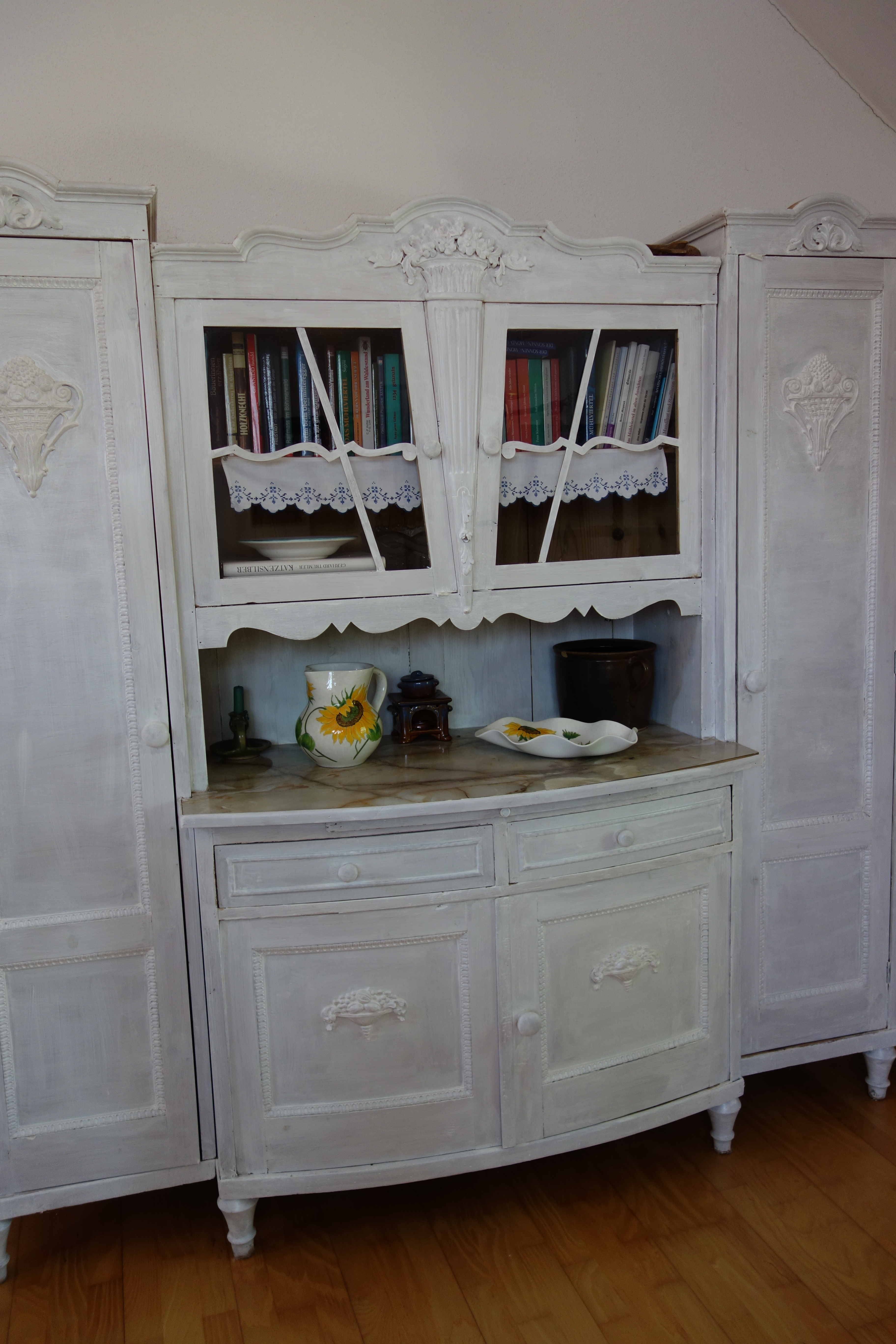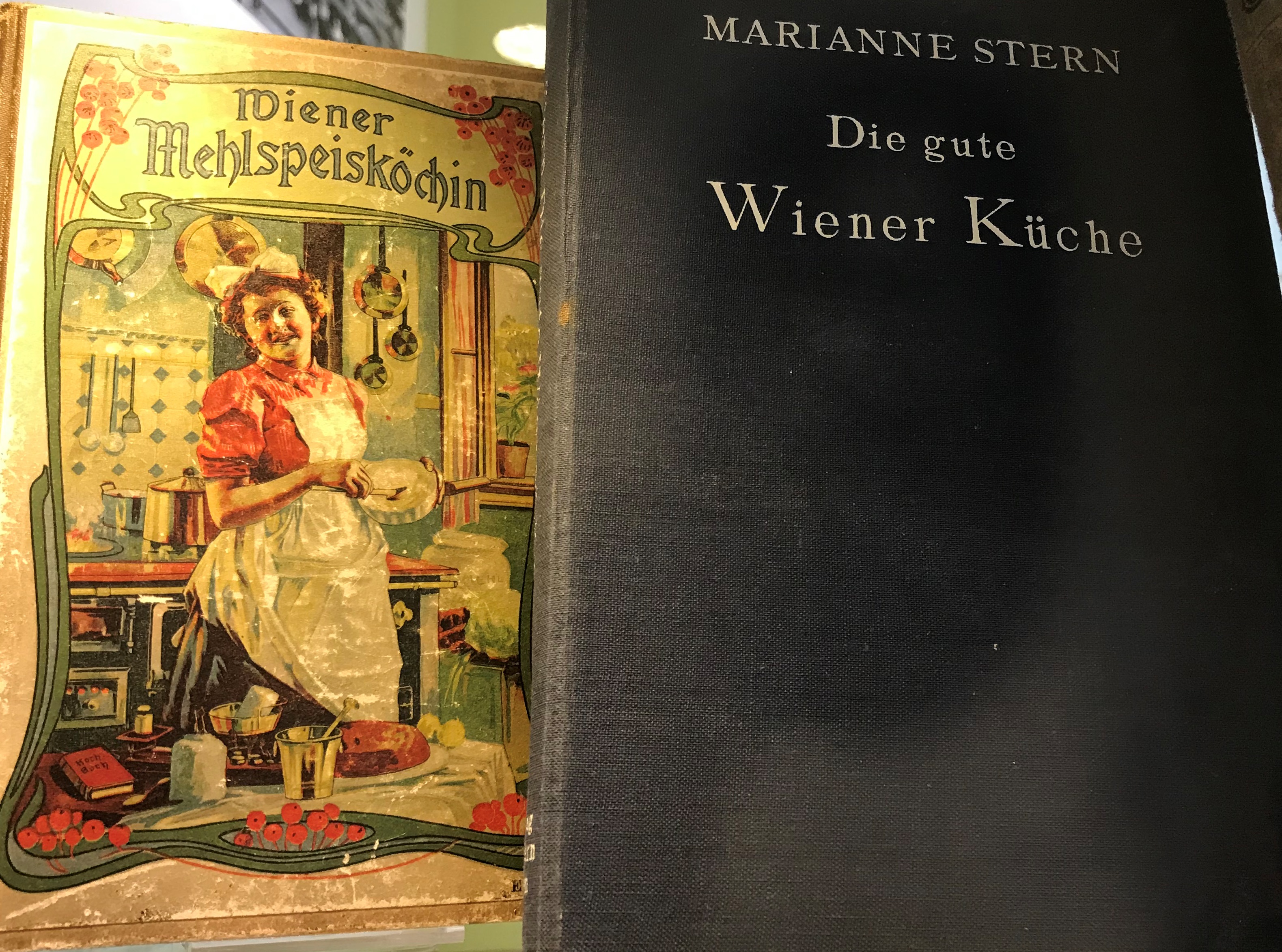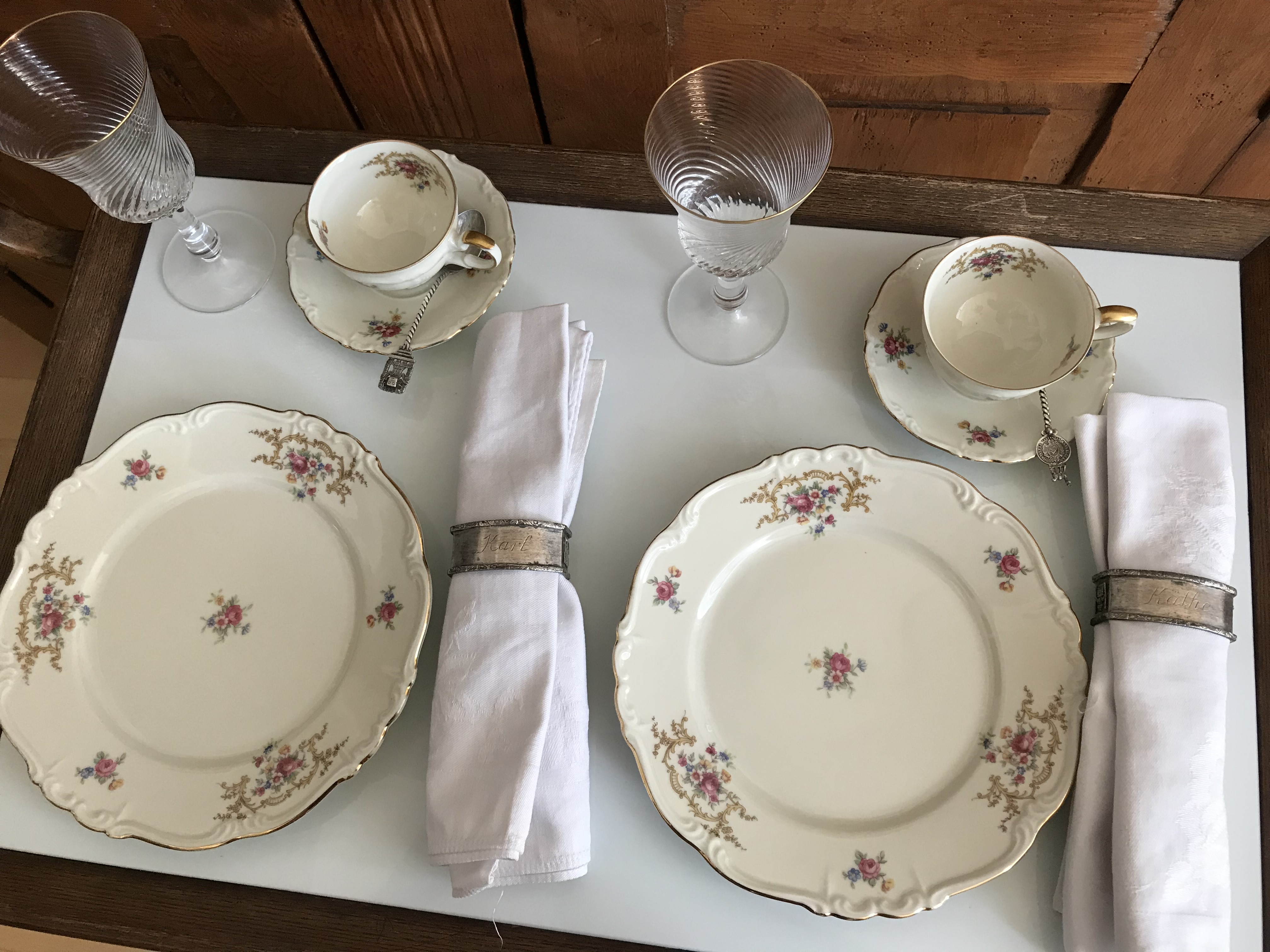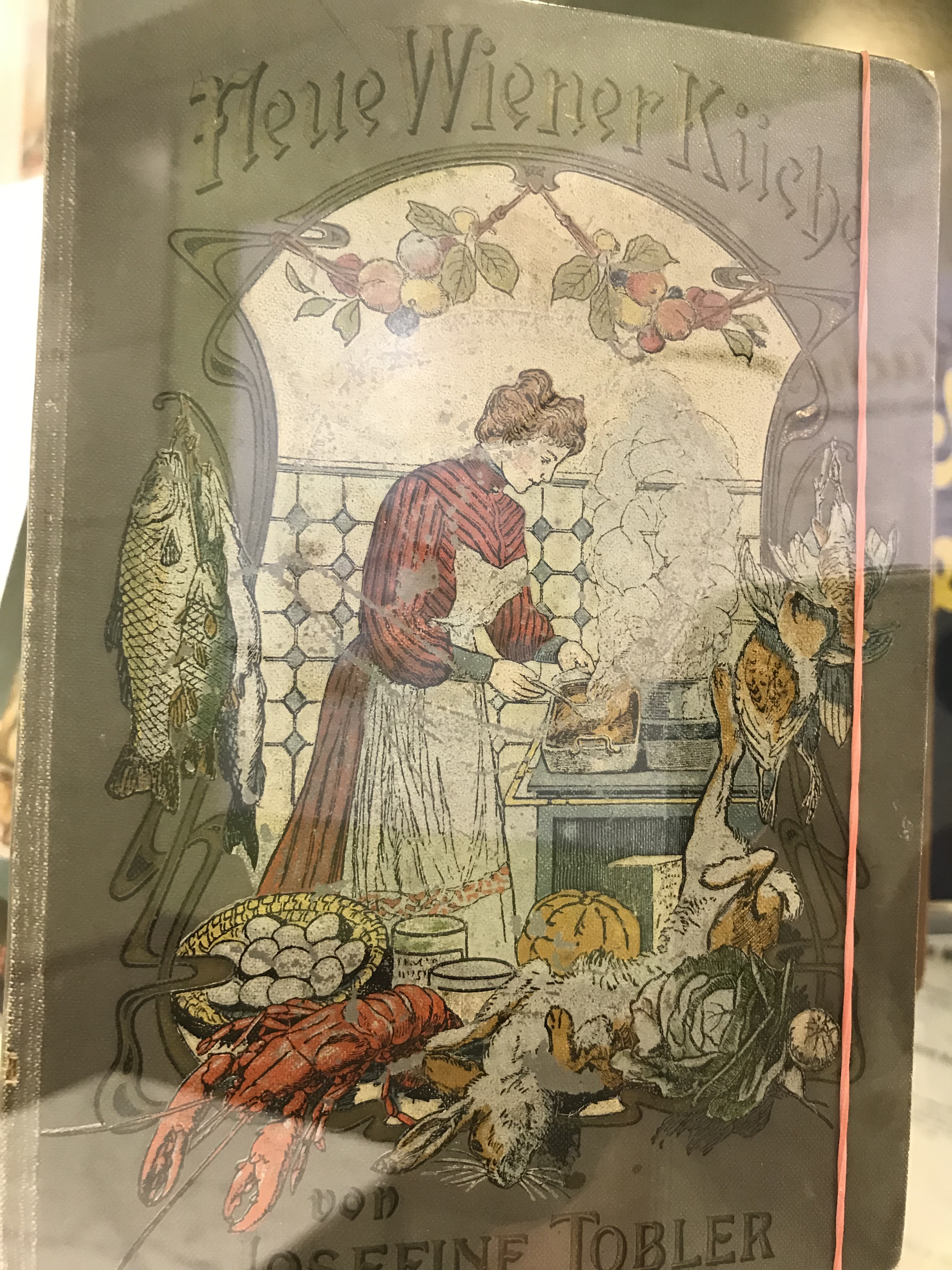WARTIME COOKERY DURING WORLD WARS I & II: VIENNESE & ENGLISH WARTIME RECIPES – COOKING FOR PEACE?

The title “Cooking for Peace” is wishful thinking on my side, but the following investigation into food supply measures, cooking techniques and recipes during war times will illustrate the similarities of methods in dealing with these challenging situations of want on both sides of the front, the later victors as well as the defeated. Furthermore, despite nationalistic rhetoric on both sides, such as naming recipes, for example “Hötzendorf Gemüse” (a vegetable stew named after the Austrian military commander) in the Austro-Hungarian Empire during World War I or “Victory in the Kitchen. Wartime Recipes” in England during World War II or the patriotic “Eintopf Sonntag” (“one-pot stew Sunday”) of the Nazis in World War II, “enemy dishes” were still around. English “puddings” (“Wurstpudding”, a pudding made of sausage), “orange marmalade”, “Marillenjam” (a jam made of apricots) and “mixed pickles” recipes were popular in Vienna during World War I and on the other hand, there was an influx of Viennese cooking traditions in England via Viennese refugees who worked as maids and cooks in wealthy English households and even booklets with continental recipes were distributed in England. Women on both sides of the trenches had to deal with the same problems trying to make ends meet and still put tasty meals on family tables in Vienna and in England. The highest priority was to avoid any waste of food and to provide the people on the “home front” with healthy and nutritious dishes, which might be of greatest interest also today because many of the techniques of preserving food, using vegetable scraps, replacing meat and an economical use of fuel, such as the use of a “cooking crate” (“Kochkiste”), are advertised nowadays, too, in order to improve our diet to reduce health-damaging consequences of too much fat, meat and sugar in our present-day meals. You can for instance find guidelines for building your own cooking crate, which was introduced in World War I, online now, which helps to reduce the costs of energy and preserves the vitamins in the steamed vegetables.

You will ask now, what’s the connection to my family? Well, first of all my great-grandfather, Ignaz Sobotka, who was 42 years old, when World War I broke out, was involved in the war effort on the home front by brewing beer in Kaiser Ebersdorf near Vienna and growing animal fodder and vegetables on the grounds of the brewery. An interesting document of 15 April 1917 signed by Anton Iritzer, the owner of the brewery, asks for “… the dispensation from military service of Ignaz Sobotka, manager of the malt factory and living on the premises of the factory (11th district of Vienna, Mailergasse 5) as he is indispensable for the war industry…. My company is busy producing fodder for animals and transforming worthless rubbish into animal fodder and I therefore need my manager. Further I have to dry coffee surrogate and I use 15,000 square metres of my garden to plant vegetables, cabbage and beans, etc. I furthermore collect the otherwise worthless vegetable cuttings in Kaiser Ebersdorf in large quantities and turn them into urgently needed animal fodder which I deliver to the fodder centre…. The k & k Uniform Depot has stored large quantities at my premises and these need an overseer who lives on site… All these tasks are carried out by my manager alone and he is therefore indispensable and there is no replacement. In case of his conscription operations would have to be terminated and the uniform depot would have to be vacated.” My grandfather, Anton (Toni) Kainz, whose father owned an inn in Vienna’s 18th district in the Währingerstrasse, was a trained cook and waiter, who had acquired experience in Switzerland and France after the successful completion of his apprenticeship in 1924 (see the certificate below).

After being drafted by the Nazis for the campaign against France at the age of 33 – much to his regret because he loved the French and their way of life – immediately after the outbreak of World War II, he was later sent back to Vienna to work as a fishmonger – a war-necessary trade at the home front – because he had stubbornly refused to divorce his Jewish wife, my grandmother Lola, and was therefore considered “unreliable” by the Nazis. Contrary to the Nazi’s intention, this offered Toni the possibility to protect his wife and his daughter, my mother Herta, from deportation to concentration camps. My mother often recounted the wonderful dishes he cooked from the meagre provisions that were available during the war. Once she received from her piano teacher a single small piece of old and grey chocolate in tinfoil, a former Christmas tree decoration, which she brought home. Toni cooked the most marvellous chocolate cream from this one grey piece of old chocolate at a time when chocolate was unavailable in Vienna. My grandmother, Lola, on the other hand did not like cooking very much and happily handed over the pots to Toni, whenever there was a family festivity. In the interwar years Lola and Toni ran a café in Vienna’s 8th district at Hamerlingplatz, where my great-grandmother, Ritschi Sobotka, Lola’s mother, did the cooking. Ritschi’s famous “Buchteln” (yeast dough dumplings filled with curd cheese and / or a special type of plum jam) is a simple recipe for a rich, fluffy and tasty Viennese sweet that can be eaten as a main course. But Lola herself was extremely skilled at bargaining for food during the 2nd World War. This was called “hamstern” in Vienna and signified the attempt at bartering any possessions city dwellers still had for food from the farmers in the vicinity of the city. In that way she put to good use her beauty and her charm in helping feed her family because Toni always sent her to the farmers and remained discretely behind. Two of Lola’s Viennese recipes are still treasured in our family, namely a delicious cocoa cake made of only two eggs and little butter or margarine and her famous brawn made of pigs’ feet is always served at our New Year’s Eve celebrations.

My great-aunt Käthe, a bank clerk and Lola’s sister, diligently prepared for her escape from the Nazis in 1938 – Austria had become part of Nazi Germany in March 1938 – by learning English and acquiring cooking skills. She then applied for the position of a cook in a wealthy English household and landed in Dover on the 7th of November 1938. She worked in 25, Warkworth Gardens in Isleworth in Middlesex as a cook until she joined her newly-wed second husband, Karl Elzholz, in Bolivia in 1944. She passed on her collection of English wartime recipes and her handwritten Viennese recipes to me. In the same way as she had introduced Viennese cooking in the English household in Isleworth, she brought back to Vienna English recipes after the 2nd World War, such as the traditional full English breakfast and her recipe for making traditional English marmalade of oranges.

Two more members of my family brought Viennese cookery to the Anglo-Saxon world: First, my grandmother’s youngest sister, Mitzi, who had fled with her first husband, Karl Elzholz to Bolivia. There she married the German Bill Stern and migrated with him to the United States after the 2nd World War where she worked as a housekeeping skills teacher, teaching cookery, sewing, knitting, etc. until her retirement, when she moved back to Vienna with Bill to live in Baden near Vienna. Her concept of cooking was meanwhile strongly influenced by the American way of life, which caused some amusement among her Viennese relatives in the 1960s and 70s: She for example advised against the consumption of milk which was supposed to be health damaging, or she excessively washed a chicken inside out with soap before roasting it to eliminate any bacteria, and she complained about the quality of apples in Austria which at that time still housed worms – something unimaginable in the US of the time where pesticides were widely and abundantly used. Second, a cousin of my mother, Edith Loewenstein, the granddaughter of Mali Markstein, Ignaz Sobotka’s sister, lived in London and worked as a cookery and German teacher there after the 2nd World War. I remember her wonderful Viennese speciality, “Brandteigkrapferl” (choux pastry puffs) with chocolate sauce. She was, above all, the one to introduce me to my best English friend since adolescence, Lynette, one of her pupils, who loves Viennese sweet dishes and desserts.

